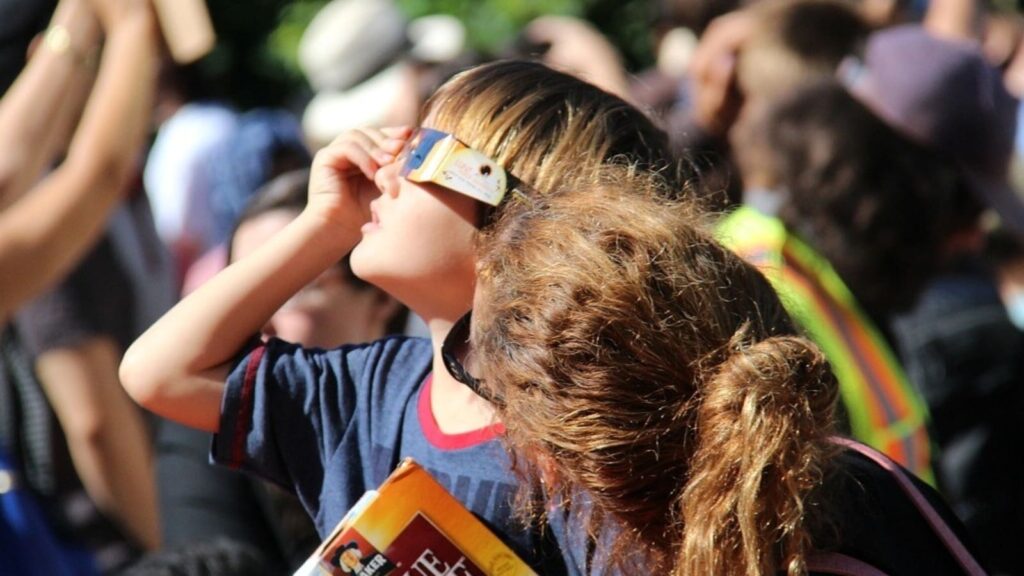Some people across the world will be able to see another eclipse, for the first time since April’s solar eclipse. The annular eclipse, or a ‘ring of fire’ eclipse, will be visible over parts of South America on Wednesday, October 2. In some parts of the word, people will also be able to see a partial eclipse.
October ‘ring of fire’ solar eclipse: Where to watch, safety tips and more (Pixabay – representational image) What is an annular ‘ring of fire’ solar eclipse?
According to National Environmental Satellite, Data, and Information Service, “An annular solar eclipse occurs when the Moon passes directly between the Earth and Sun, but does not completely cover the Sun’s disk. Instead, it covers most of the Sun, leaving its outer edge visible as a bright ring or “annulus” around the darkened Moon. This is also sometimes referred to as the “Ring of Fire” effect.”
When and where can we see the ‘ring of fire’ solar eclipse?
The path of annularity will run through certain southern parts of Chile and Argentina. Space.com says that only about 175,000 people live within the path of the annular eclipse, making it extremely remote.
The time of the eclipse will vary depending on where the viewer lives. In Chile and Argentina, annularity will occur slightly before 5.30 pm local time for between 3-6 minutes. In Rapa Nui/Easter Island, which is a territory of Chile located in the Pacific Ocean, it can be viewed around 2.03 pm local time.
The ‘ring of fire’ can be seen from a few notable spots, such as Perito Moreno National Park, Puerto Deseado, and Puerto San Julián in Argentina, and the town of Cochrane in Chile.
When and where can we see the partial solar eclipse?
A partial solar eclipse will be visible about 85 minutes before and after the ring, and can be seen by people in parts of South America, Antarctica, North America, the Atlantic Ocean, and the Pacific Ocean, including Hawaii. Notable spots from where the partial eclipse can be viewed include Buenos Aires, Argentina, São Paulo, Brazil, and Asunción, Paraguay. A full map of the eclipse’s path can be viewed on NASA’s website.
How to safely view the ‘ring of fire’ solar eclipse
According to NASA, it is not safe to look directly at the sun during an annular eclipse, without specialised eye protection. “Eclipse glasses are NOT regular sunglasses; regular sunglasses, no matter how dark, are not safe for viewing the Sun,” NASA says.
One must never look at the sun through a camera lens, telescope, binoculars, or any other optical device while donning eclipse glasses or using a handheld solar viewer as “the concentrated solar rays will burn through the filter and cause serious eye injury.” In the absence of eclipse glasses or a handheld solar viewer, one can use an indirect viewing method. One alternative is a pinhole projector, which, according to NASA, “has a small opening (for example, a hole punched in an index card) and projects an image of the Sun onto a nearby surface.” One can safely view the projected image with the sun at the back, but must not look at the sun through the pinhole.
Source link : http://www.bing.com/news/apiclick.aspx?ref=FexRss&aid=&tid=66fa525c35ee40209005c391f21a9c60&url=https%3A%2F%2Fwww.hindustantimes.com%2Fworld-news%2Fwhat-is-annular-ring-of-fire-solar-eclipse-when-and-where-to-watch-the-october-event-safety-tips-and-more-101727678752433.html&c=14685012503870220735&mkt=en-us
Author :
Publish date : 2024-09-29 19:55:00
Copyright for syndicated content belongs to the linked Source.
